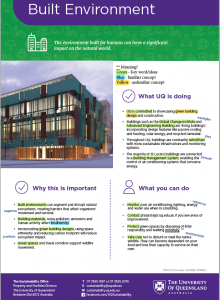12 Annotated Reading Skills
Annotated reading, also known as close reading, is a deliberate interaction with a text with the aim of helping the reader to understand it more fully. It often involves highlighting sections, making notes in the margins of a printed text or comments in a PDF, or underlining important points for later review.
This chapter will help you understand why, when, and how to annotate a reading.
Why?
Annotating a text you are reading gives you a quick reference guide for future use. Rather than having to re-read the article or PDF each time you return to it for information, you can rely on the quick reference points you have highlighted or the notes and comments you have made in the margins. This is a very useful skill when preparing assessments, synthesizing sources, and comparing and contrasting key concepts and ideas across different academic texts. When you are annotating a reading you are actively engaging with the text and will therefore read it more closely. Annotation also gives you the opportunity to add your own thoughts and comments, raise questions for further investigation, and challenge ideas within the text.
When?
After you have skimmed and scanned the text (see previous Chapter 11), for an overall understanding of its key ideas, you should complete a more in-depth reading if you intend to use the text for an assessment, to gain deeper understanding of the topic, or to engage with the text for class preparation. Even while completing the initial skimming and scanning you may want to mark key headings, sub-headings, concepts, or words. It is beneficial to go back over the text and add additional notes and comments as your understanding increases, specifically if you are comparing and contrasting different texts (journal articles, book chapters) about the same topic.
How?
While the method generally comes down to personal preference, here are some basic guidelines:
- Keep your annotations brief – use single words or brief phrases, rather than whole sentences.
- Use different coloured highlighters to signify different concepts. However, use highlighting very sparingly. Excessive highlighting generates a colourful page where nothing stands out, which is the point of highlighting in the first place.
- Circle or mark words you are unfamiliar with and use a dictionary to understand their meaning and use. This will have the added benefit of increasing your academic vocabulary.
- You may find it simpler to create a ‘key’ with symbols that represent different concepts or elements and insert the symbols within the text. You can use a range of keystrokes, for example, * # > < “” {} + ** ! @ ? A word of warning, include the ‘key’ on the document/text so that you have a quick reference guide for later and do not forget what the symbols stand for.
- Adobe Acrobat Reader DC offers Comments and Edit facilities to subscribers. This software is pre-loaded on all UQ Computers [1], however if you would like to use it at home you will need to purchase a subscription online. Alternatively, you can Track changes in a Microsoft Word document (insert comments), highlight and change fonts. Perhaps you would prefer to simply print the class handouts and write on them; please ensure these a printed ahead of class time.
Below is an example of an annotated text with a key:

There are a range of annotating tutorials available via YouTube. Below is one example[2]

